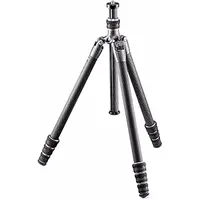TechRadar Verdict
I’ve used Peak Design's original Travel Tripod for years now, marvelling at its compact design, light weight, rigidity and versatility, and now Peak Design has done it again, with the bigger Peak Design Pro tripod (tested) and its Pro Lite and Pro Tall variants. These are expensive tripods but they are spectacularly good. They use the same unique dovetailing leg and center column design for a smaller folded package but excellent stiffness, four section legs instead of five, a new Pro ball head with a smart ‘upside-down’ design and three optional ‘mods’ – a fluid pan and tilt head for video, a levelling base for your own head of choice and spiked feet. The good news is that they are just as superb. The bad news is that this is a Kickstarter campaign and they won’t actually go on sale until November 2025.
Pros
- +
Three tripods, three heights
- +
Excellent new Pro ball head
- +
Exceptional stiffness
- +
Clever optional add-ons
Cons
- -
Expensive
- -
Phone clamp currently a paid extra
- -
Pro and Pro Lite too similar?
Why you can trust TechRadar
Peak Design Pro Tripod: two-minute review
Peak Design’s tripods have a couple of unique design features. One is the leg design, which is not tubular but has a six-sided cross section with an inner edge that fits straight up against the center column, with no gaps. The center column is thinner than most but also has a six-sided cross section for the legs to fit neatly against the legs when folded. This non-tubular construction does seem to give both the legs and the center column unusual stiffness.
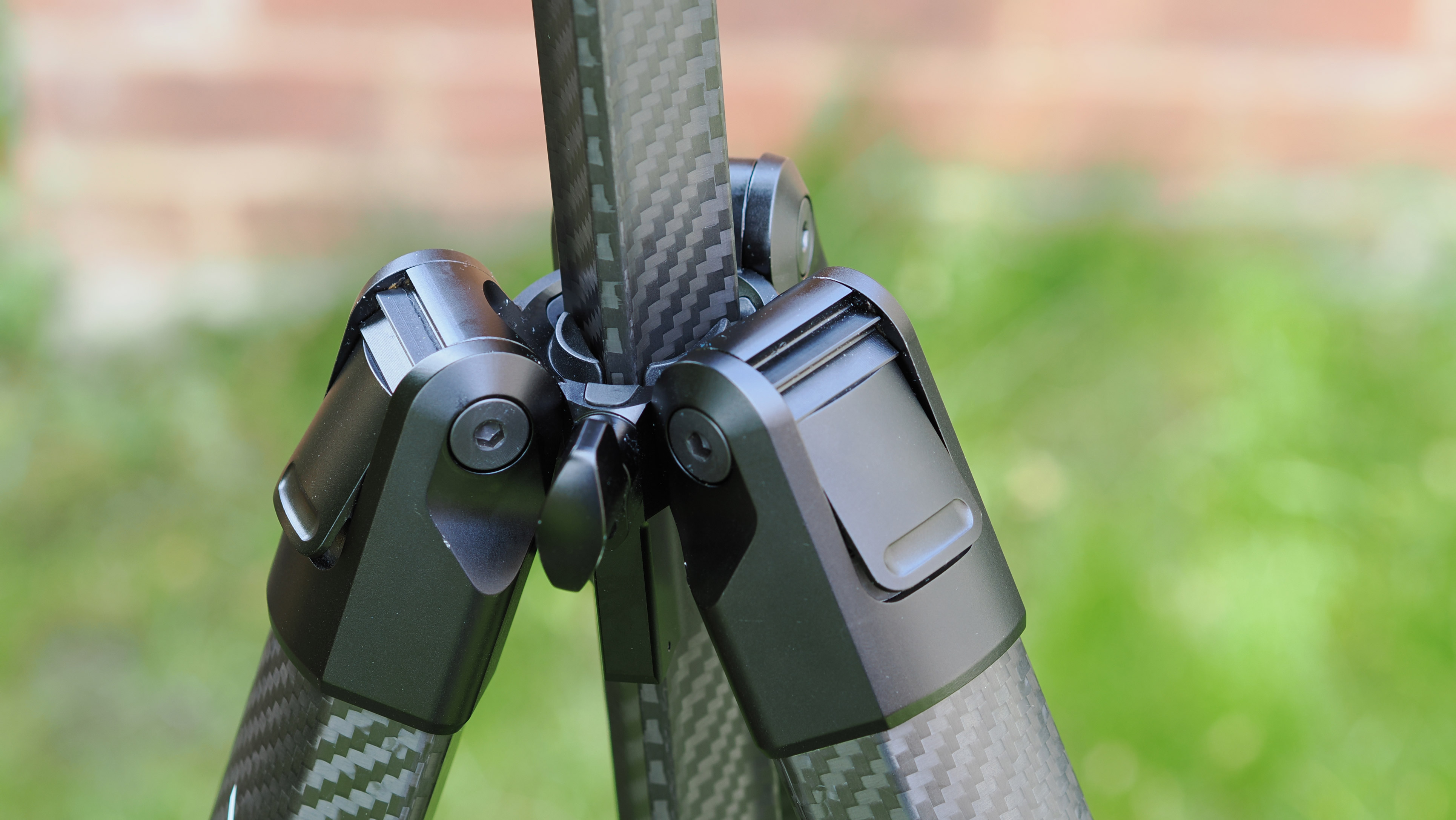
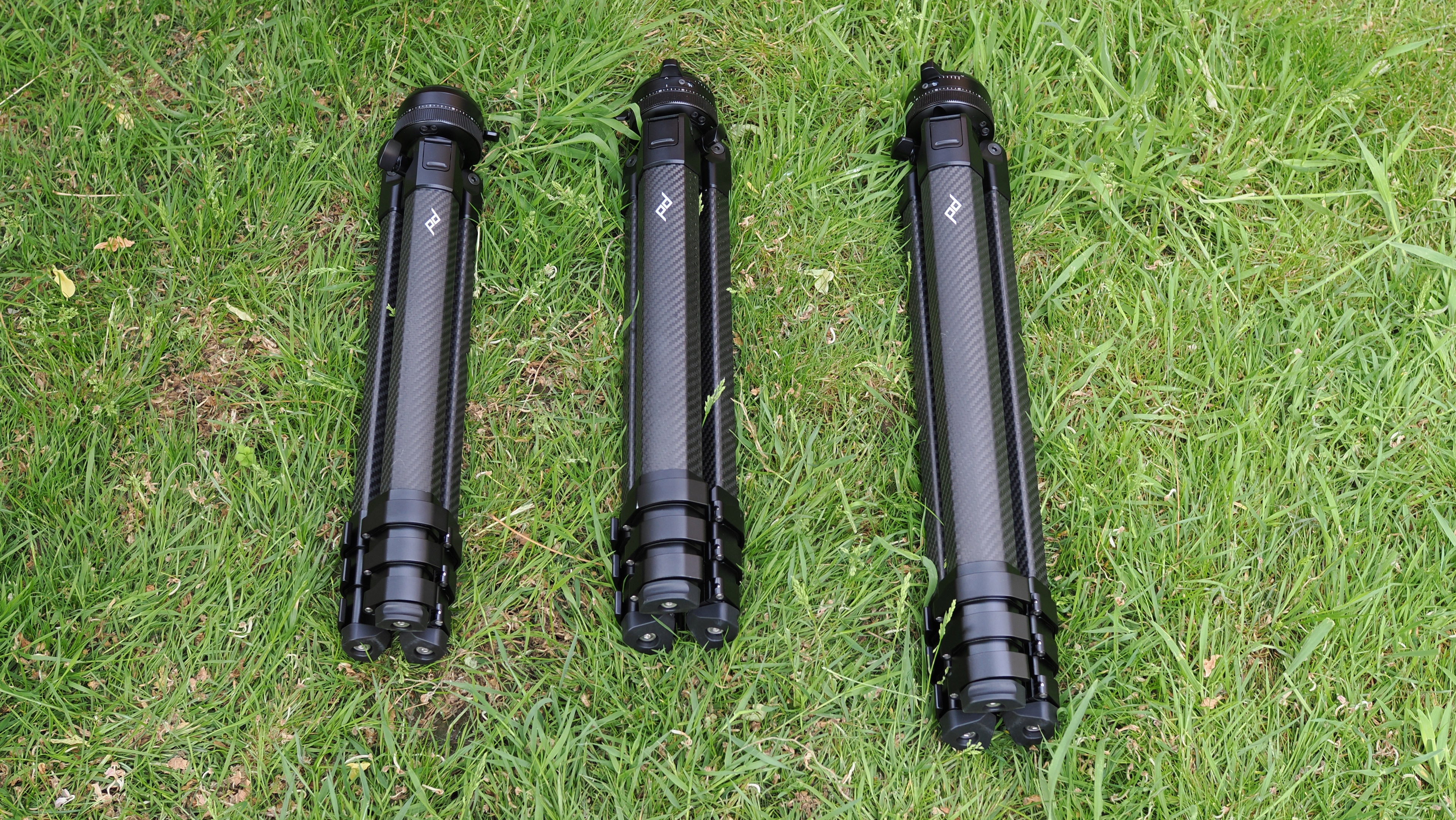
The other unique feature is a low-profile ball head with no protruding locking nut. Instead, it’s clamped with a rotating collar, and another, just above locks and releases the compact Arca Swiss compatible camera plate.
This low profile head design means that the original Peak Design travel tripod does not have to have its legs rotated 180 degrees from their folded position before you can use it. The low height of the ball head means that you can simply fold the legs in and pack it away without any complicated manoeuvers.
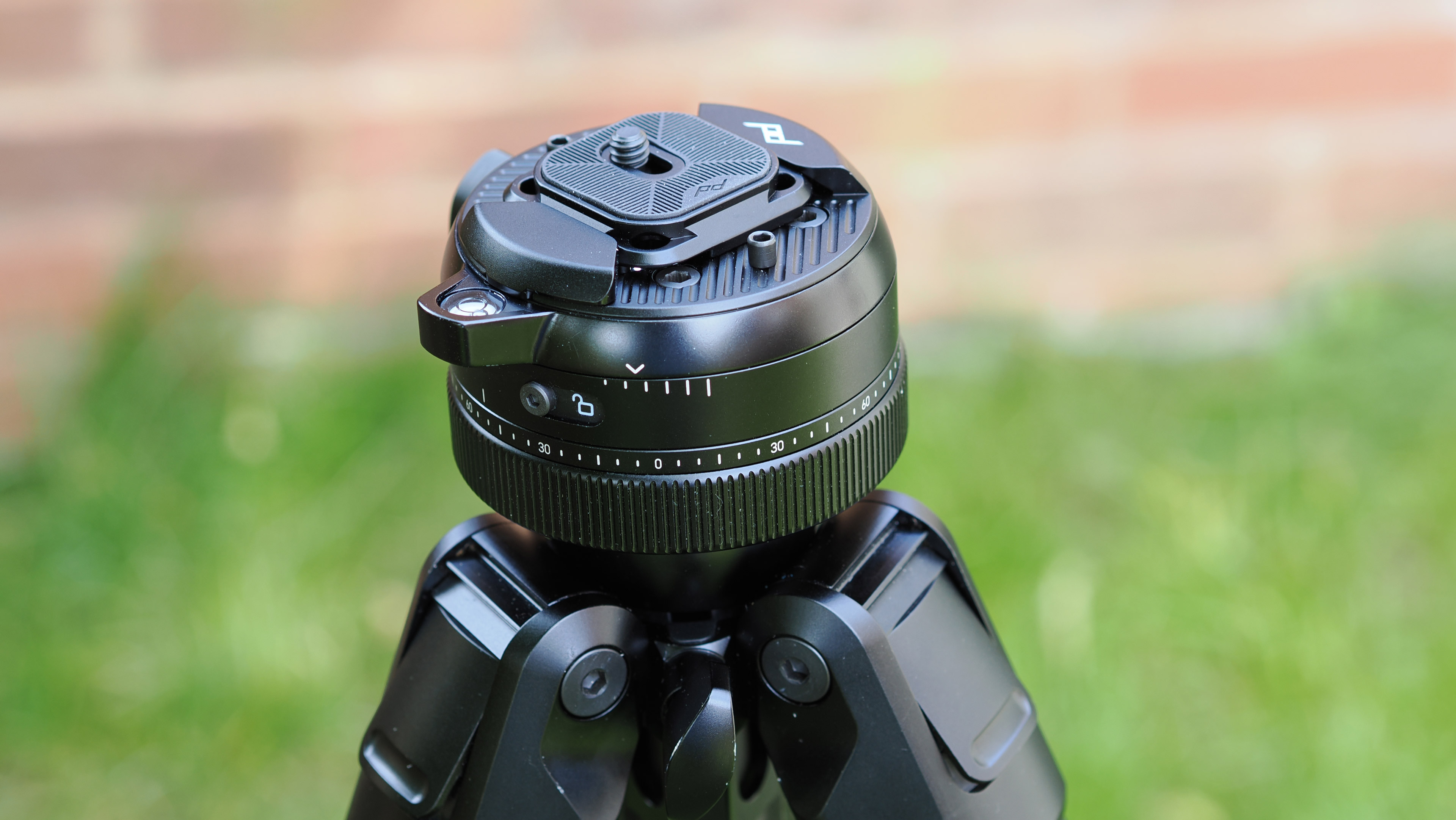
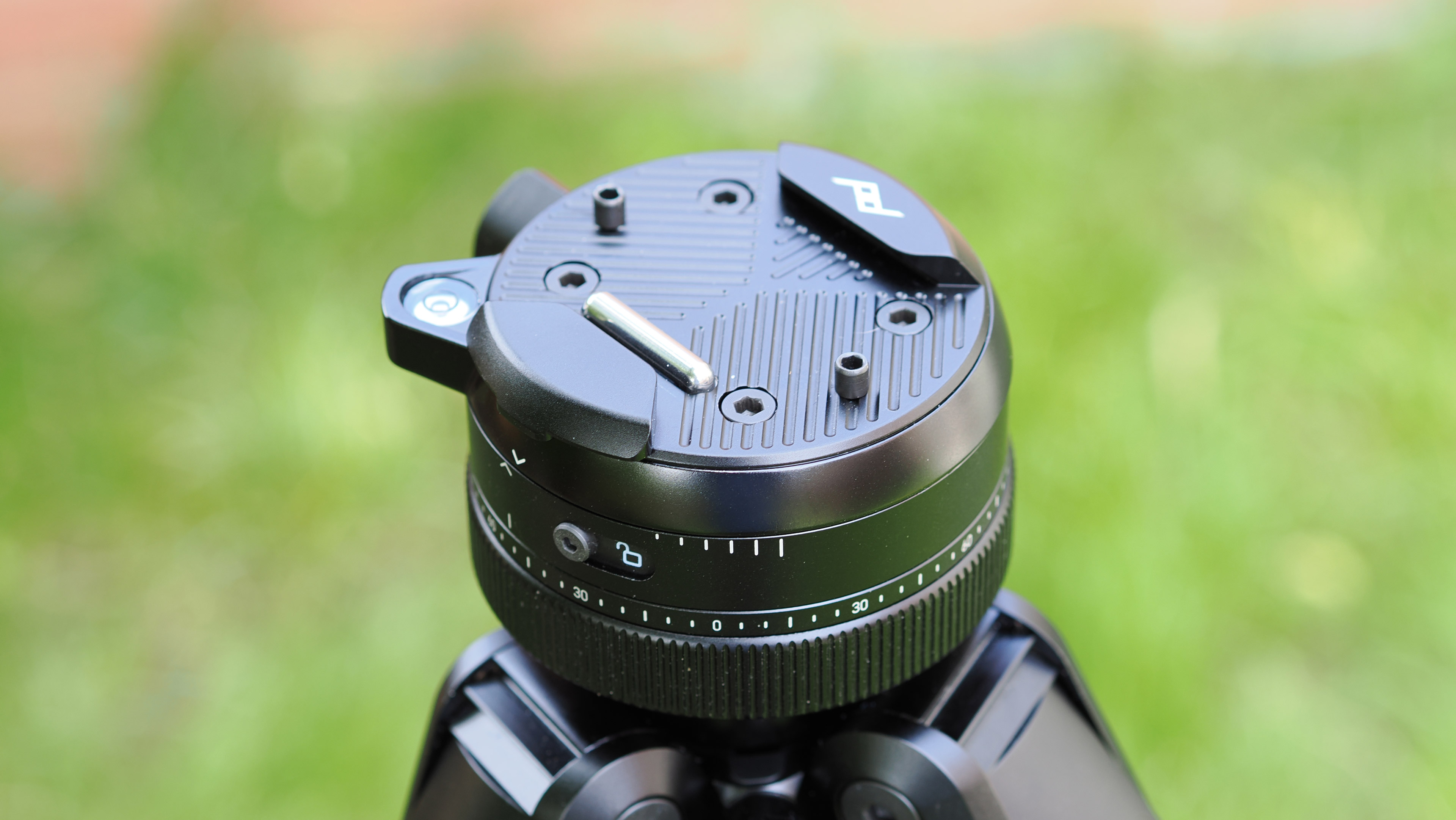
These design features made the original Peak Design Travel tripod very different to anything else. Now Peak Design has taken those same design concepts and scaled them up into a Pro version designed for serious professional use.
In fact, there’s not one Pro tripod but three. The regular Pro tripod is the one I spent most time with for this review, but I also got to try out the Pro Lite and Pro Tall variants. The Pro Lite is almost the same height and folded length of the regular Pro Tripod, but has a lighter construction for easier portability. The Tall version has longer leg sections and can even reach eye level for tall people without any center column extension – it exceeded my eye level!
The new Pro tripods aren’t just bigger and more substantial than the original Travel Tripod – they have a new Pro ball head that’s larger and more substantial than the original, plus it has a neat ‘inverted’ design so that the pan axis is above the ball not below it. This means that you can level the pan axis for panning shots and panoramas without having to fiddle around with the leg lengths. It’s not a huge range of adjustment but it might be all you need.
For more extreme pan axis adjustments, or if a lot of your work is video, Peak Design has you covered. There are two new ‘mods’ to go with these tripods: one tilt head for video work, and the other a leveling bowl which you swap out with the standard center column, and which has a regular head attachment screw so that you can use your favorite video head if you want to.
Sign up for breaking news, reviews, opinion, top tech deals, and more.
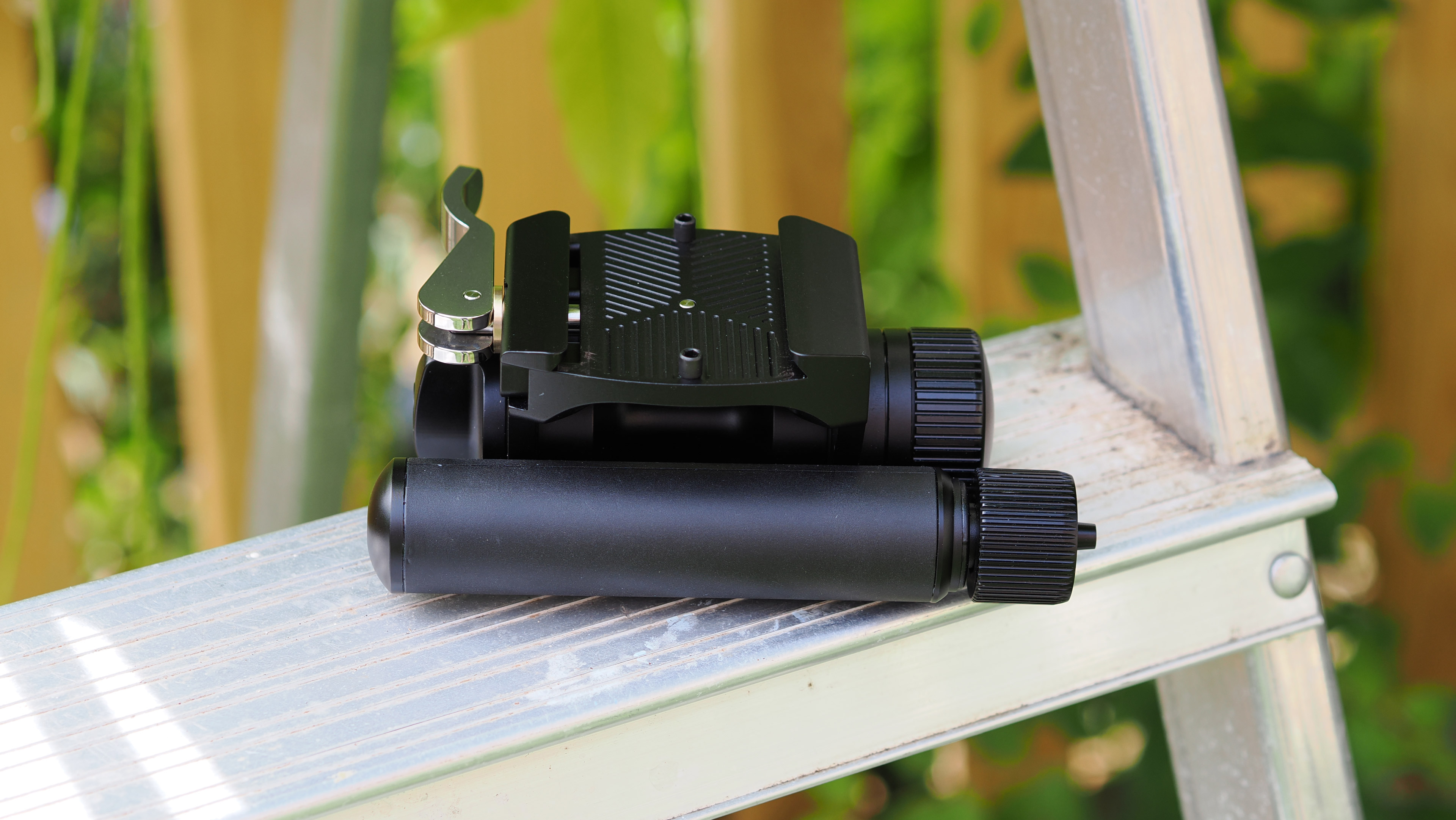

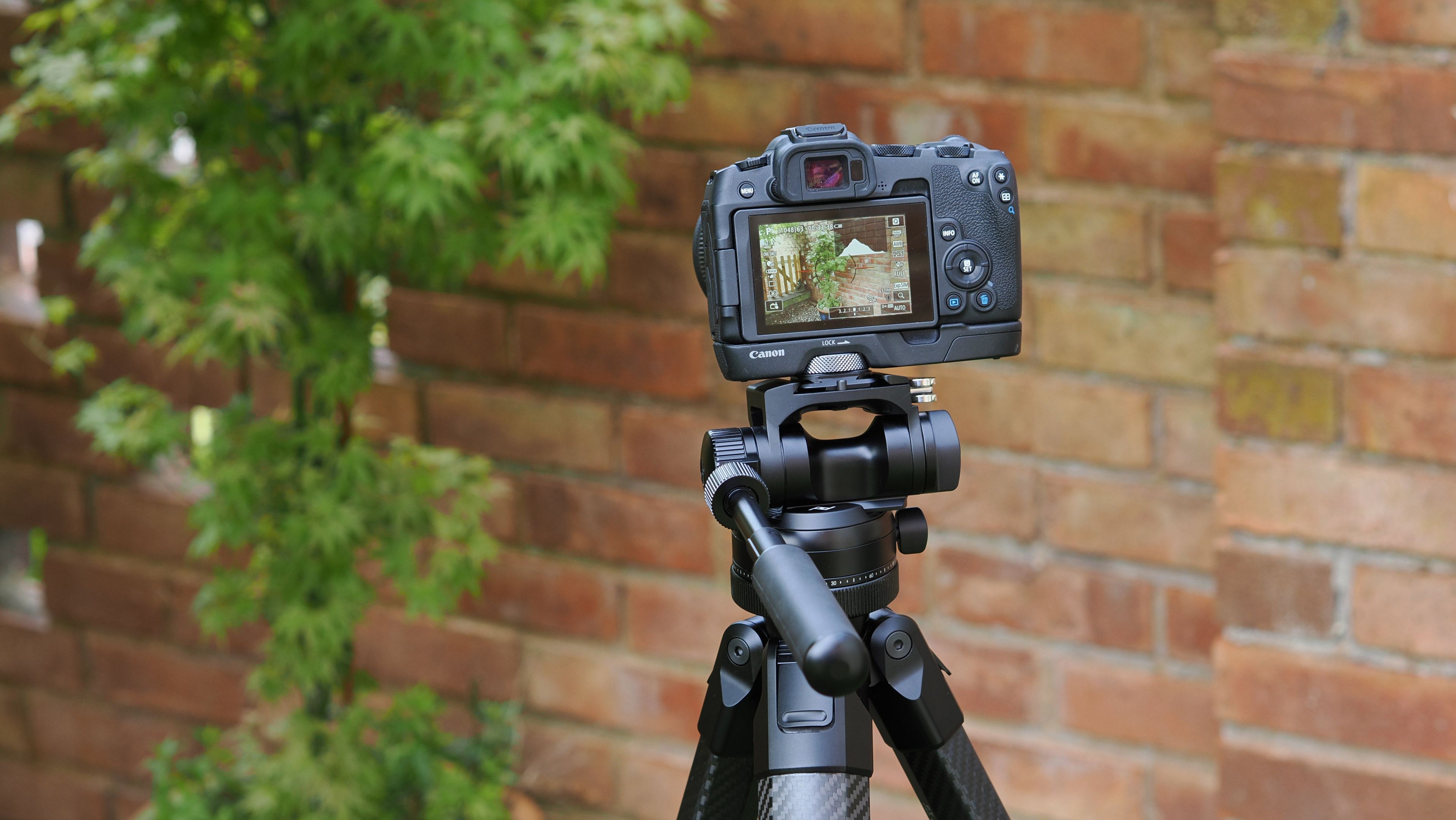
I love the original Peak Design Travel Tripod, so do the new Pro tripods leave me just as impressed? Yes! It is, literally, just like using scaled up versions of the Travel Tripod. The carbon fiber legs feel just as smooth and warm to the touch, the leg clamps are just as quick and positive, and because these Pro tripods have four leg sections rather than five, they’re a little quicker to set up.
The new Pro ball head is terrific. It’s big and chunky, it locks tight and it doesn’t add a whole lot to the tripod’s height when you’re packing away. As before, there are no protruding knobs or levers to get in the way either.
Peak Design’s use of a rotating collar to lock the QR plate does take a little getting used to. The head has two collars in close proximity and at first it can be a struggle to remember which does what and how they work.
The new Pro head, though, feels absolutely rock solid, and it’s with the pan and tilt mod that it gets really clever. All you need to do is take out the regular Arca Swiss plate and slot in the pan and tilt add-on for a proper fluid pan and tilt action.
There’s an extending panning handle which is stowed against the side of the head via a magnet (Peak Design loves magnets) and can be quickly screwed into the head ready for use. It sounds like a kludge, with one head mounted on top of another, but it absolutely isn’t. It looks like it was made to work this way, and feels like it too. The tilt axis is sprung, by the way, so if you use a longer camera plate you should be able to balance it up fairly well for light and controlled tilt movements.
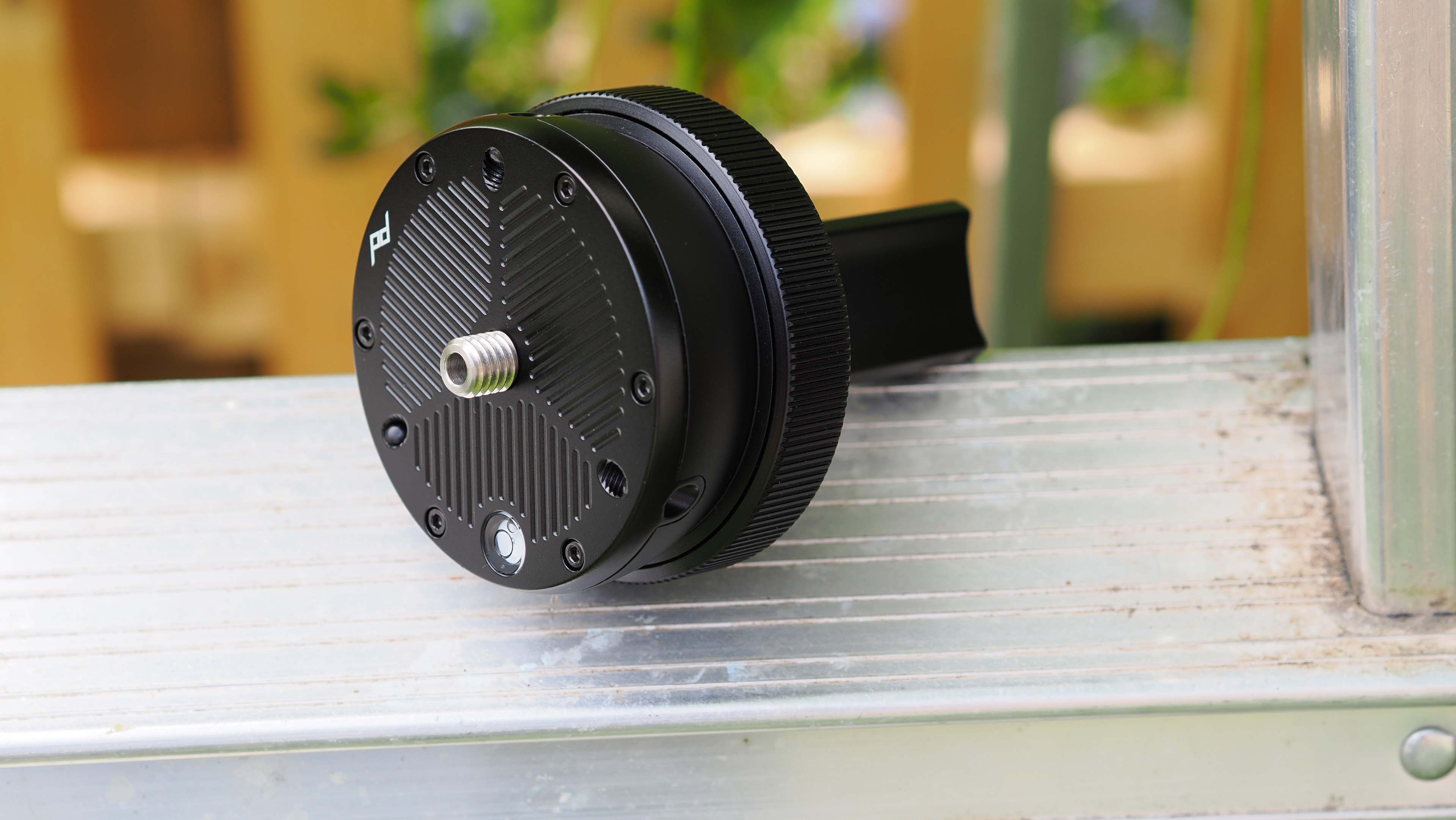
The center columns on these tripods are longer than the one in the original Travel Tripod, which is useful, but even though they’re fixed with a small-looking locking knob, they lock down really tight and with no flex.
You can also get spiked feet but these are an optional extra, nor does it seem like Peak Design includes a phone clamp with these tripods, so that will be a paid extra too. It kind of makes sense because these Pro tripods are overengineered for phone use anyway. If you do get the phone mount, it will still slide up into the base of the center column for storage. Here, Peak Design has stuck with its slightly complicated pull-and-twist hook release which is easy when you’ve learned how it works but can be annoying at first.
So that’s a quick tour of the Peak Design Pro Tripods, but which is the best one to get? That’s quite tricky because they are somewhat similar, both in size and price. The standard Pro tripod is expected to sell for $899.95 when it goes fully on sale in November 2025, the lighter Pro Lite will be $799.95 and the Pro Tall will be $999.95. I haven't seen prices for the UK or Australia yet.
Personally, I wouldn’t go for the Pro Lite. I can understand the reasoning – it’s a slightly lighter, slightly cheaper alternative to the regular Pro model – but it’s not a lot smaller and I think I’d rather just pay the extra for the thicker legs of the Pro model. The Pro Tall is interesting, though. If I was 6ft tall and didn’t like using center columns, I would go for this one. It’s definitely longer when packed away, but all of these tripods are too long to fit inside a backpack anyway and would end up strapped to the outside. Besides, for those times when you didn’t need the extra height you could just extend three leg sections not four, for even more stability.
Peak Design Pro Tripods: key specs
| Header Cell - Column 0 | Pro Lite | Pro | Pro Tall |
|---|---|---|---|
Packed length | 48.8cm | 50.1cm | 58.1cm |
Packed diameter | 8.5cm | 9.3cm | 9.3cm |
Max height, center column down | 133.2cm | 138.0cm | 162.0cm |
Max height, center column up | 162.5cm | 168.4cm | 197.4cm |
Min height (low mode) | 15.8cm | 15.9cm | 17.3cm |
Weight | 3.74lbs / 1.7kg | 4.19lbs / 1.9kg | 4.4lbs / 2.0kg |
Max payload | 15.9kg | 18.1kg | 18.1kg |
Head | Integrated Pro Ball Head | Integrated Pro Ball Head | Integrated Pro Ball Head |
Material | Carbon fiber | Carbon fiber | Carbon fiber |
Leg sections | 4 | 4 | 4 |
Peak Design Pro Tripods price and availability
The Peak Design Pro Tripods launch on Kickstarter on July 17 2025 but are expected to go on general sale in November 2025. The Pro Lite tripod has an expected price of $799.95, the Pro tripod will be $899.99 and the Pro Tall will sell for $999.99.
The Tilt Mod and Pro Leveling Base will be sold separately and we’re currently waiting for price information on these, but we are told the option spiked feet will sell for $49.95.
Peak Design Pro Tripods: Also consider
Gitzo Traveler Series 1
If you like a tripod with style and quality but in a more traditional form, the Gitzo Traveler Series 1 could be a great choice. It has a straightforward, classic design with no frills or gadgets, just superb materials and construction. It doesn’t go quite as tall as the Peak Design Pro models nor fold so neatly, but it’s a classic design that’s stood the test of time.
Read our Gitzo Traveler Series 1 review
3 Legged Thing Punks Brian 2.0
If you want a full height carbon fiber tripod, you don’t need to pay Peak Design money to get it. The Punks Brian 2.0 is from 3 Legged Thing’s more cost-conscious Punks line, but is both well-made and typically colorful and stylish. There is some flex at full height, though, and when it’s folded up the Punks Brian 2.0 is nowhere near as neat as Peak Design’s tripods. This is still a great value choice, though.
Should I buy a Peak Design Pro Tripod?
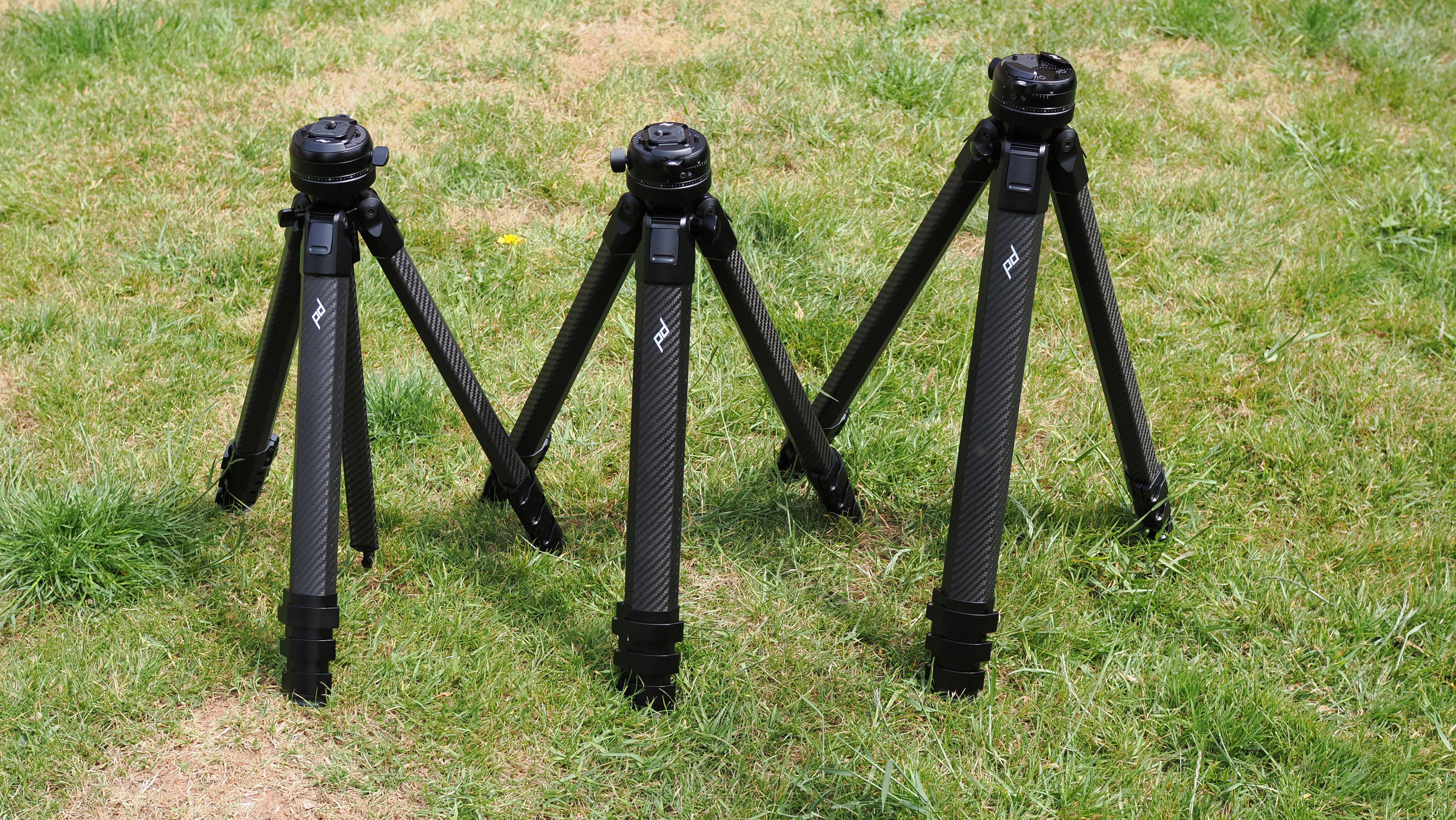
Buy it if...
You already love the Peak Design Travel Tripod
Good as it is, the Travel Tripod is not really set up for heavier gear or taller working heights, but the new Pro tripods have all the same design finesse but scaled up for pro use.
You’re more concerned with design quality than price
Heaven knows the new Peak Design Pro tripods aren’t cheap, but they are beautifully designed, exceptionally compact and, based on our samples, very rigid
Don't buy it if...
You’re trying to save money!
If all you need is rock-steady everyday value from your tripod, then you don’t need to pay these prices. There are plenty of cheaper carbon fiber or aluminum alternatives
You need flexible angle/boom options
If you shoot nature close-ups in the wild or you’re working with flat-lays or table-top setups then you need the flexibility of a boom arm, and that’s no an option here
How I tested the Peak Design Pro Tripods
- Operational speed and efficiency
- Stiffness and rigidity
- Ball head operation
- Effectiveness of add-ons
I had just two weeks to try out the Peak Design Pro tripods because loan stocks were in short supply and shared between many different reviewers. However, I know the original Peak Design Travel Tripod very well and I review tripods as part of my work, so I already had a list of what I was looking for and expected from these new Pro tripods.
I particularly wanted to test the speed and ease of deployment and was pleased to find it was just as slick as with the original Travel Tripod but quicker, thanks to the 4-section legs and larger leg clamps. I also wanted to check if the excellent stiffness of the original Travel Tripod had scaled up to these new, bigger sizes, and it has. I don’t remember any other tripods I’ve tested with more torsional rigidity and lack of leg flex than these.
I was also keen to check how the new Pro Ball Head worked. The original was good but quite small and fiddly. This one is much better. Not only does it clamp tighter and hold heavier loads better, the inverted ball design makes levelling the camera for panning shots so much easier.
Lastly, I spent some time trying out the Tilt Mod and Pro Leveling Base and came away impressed. The Tilt Mod fixes so well to the Pro Ball Head that they feel like a single (very smooth) unit and the Pro Leveling Base took a minute or so to swap out with the regular column but lets you use your own tripod head.
First reviewed June 2025
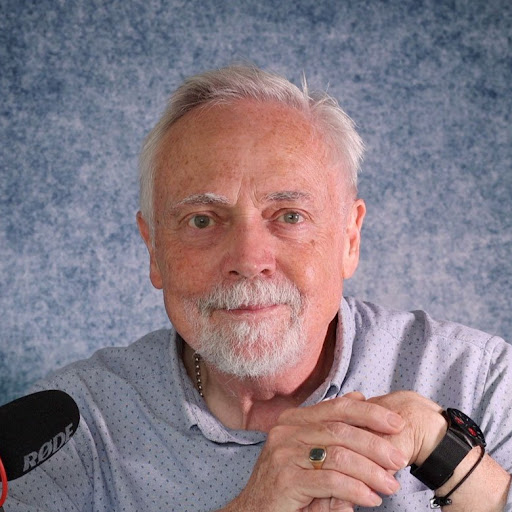
Rod is an independent photographer and photography journalist with more than 30 years' experience. He's previously worked as Head of Testing for Future’s photography magazines, including Digital Camera, N-Photo, PhotoPlus, Professional Photography, Photography Week and Practical Photoshop, and as Reviews Editor on Digital Camera World.
You must confirm your public display name before commenting
Please logout and then login again, you will then be prompted to enter your display name.

